Smart home heating system. Smart home: ventilation, air conditioning and heating systems
What previously seemed fantastic is now increasingly becoming a reality. A smart home is no longer just a dream and not even the preserve of a select few. Almost everyone can afford to use its systems. "Smart" heating systems can be installed either all together or separately, sequentially.
A “smart” heating system builds its operation based on the modes specified by a person:
1. Temperature conditions in various rooms. A person can set the minimum temperature at which the heating turns on, and the maximum at which it turns off. For residential premises this can be, respectively, 20 and 22 degrees, and for utility rooms 15-17 or even 5-6. At the same time, the automation system can simultaneously cope with a large number of rooms. If there are a large number of them, you can divide the house into zones - living, children's, household, etc.
2. Temporary modes. There's no point in supporting high temperature constantly. Heating smart home can be programmed for more effective work. For example, reduce the temperature and keep it at the lowest possible level during certain periods:
when residents are not at home, for example, from 8:00 to 17:00 - 5 degrees, and when arriving, heat up to 20
during sleep, reduce the temperature by 2-3 degrees, which promotes deeper and more productive rest
3. Operating modes of various groups heating equipment when there are several of them - radiators, heated floors, infrared panels. At the same time, you can regulate the temperature not only by different rooms, but also within one, for example, vertical heat distribution.
Especially for
Probably most of us have such a concept as “ smart House"seems like something fantastic, with a huge number of laid wires, communications and computer systems who manage this entire enterprise. Meanwhile, each of us can make our home “smart”, because in fact it is the most ordinary apartment or house, living in which is not only convenient, comfortable and safe, but also economically profitable. Fantastic? No, just reasonable approach to the point. Everything, as they say, is in our hands.
Comfort system
How to ensure comfortable living in a smart home? Control of all available devices by a single center (controller) using just one remote control. In addition, such intelligent control of a smart home provides the ability to interact with devices outside the home using existing networks - Wi-Fi, Internet, cellular communications, and others. For example, if you forgot to turn something off, you can easily fix it using your smartphone, as well as control what is happening in your home at the moment.
And management lighting fixtures in a contactless way? You enter a room and the lighting automatically turns on as required by the current lighting level and turns off when you leave it. The same trick can be done with music, which will sound when you are in the room and fade away as soon as you leave it.
The climate control system of a smart home constantly monitors the air temperature and humidity that is comfortable for you. Thanks to a single “smart” control panel, you can control the operation of any electrical appliance in your home from anywhere, and there is no need to run to the living room or elsewhere somewhere checking whether you turned off the light there or not.
Safety system

Good old English proverb“my home is my castle” in a smart home can also be implemented quite simply. Of course, it’s up to you to decide whether to install armored glass or roll-down blinds in your home, but video surveillance and intrusion protection systems are within the power of almost everyone. A installed sensors smoke and fire will warn you in time, no matter where you are. While you are getting to your home, the control system will notify the fire brigade and turn on the built-in fire extinguishing system.
Having such a “smart assistant” at hand, you can leave your home for a long time, knowing that, if necessary, the smart home control system will not allow trouble. In addition, the control controller will be able to create a presence effect at any time to scare away intruders in your absence, including simulating a large bark angry dog, and if necessary, put it into action burglar alarm with automatic notification of the relevant services.
Saving systems
This is one of the key points of any smart home. It is unlikely that a home can be called truly “smart” if it is not able to save electricity, water and thermal energy. Sensors for leakage, control and water consumption will help protect against flooding and warn in time about possible overconsumption, and the consumption management system electrical energy smart home will help you save significantly on electricity by intelligently managing your household electrical appliances.
The use of new technologies for smart home heating systems, since energy consumption for heating and hot water supply is the lion's share from all energy costs for maintaining the home. Among such smart home heating systems, special mention should be made of devices such as heat pumps, which are capable of providing any home with not only thermal energy and hot water, but also condition it in the hot season, using in its work only natural heat, which the heat pump “pumps out” from external environment(air, water, stones, earth). The heat pump does not require any additional fuel, and therefore it is absolutely environmentally friendly and safe. And, despite the fact that the price of a heat pump is quite high, the savings from its use will more than pay for the energy costs in just a few years, and the long service life (up to 30 years) heat pump will allow you to use it long years, significantly saving all this time on energy resources.
In order to equip your home and make it comfortable, safe and economically profitable, you do not need to rebuild it entirely at once. All smart home control systems can be implemented gradually, as funds, strength and desire become available, taking small steps to bring your dream of a place where everyone understands you perfectly.
The system allows you to control the heating of several rooms (up to 512). Temperature range for measuring and adjusting set temperatures from 0 to 125°C (sauna).
Each room can have its own weekly program with its own temperature and time settings. This allows you to achieve optimal control of the heating of your apartment or house and saves energy. Setting the mode and temperature can be done from the remote control or computer screen. By controlling it from a computer, you can set any heating program.
This heating control system can be used with both electric heating, as well as other types of heating.
- Each room operates according to a separate weekly program, where you can set the heating control mode on weekdays and weekends. The day is divided into two temporary settings - conventionally called “night”/“day” and “day”/“night”.
- Heating control from the “Master” system remote control allows you to set standard programs(up to 8) separately for each zone.
- The system allows you to turn on and off all heating zones at once, turn on/off each zone separately, and also set your own temperature regime in each heating zone.
Control of heating systems of various types
The "McS" system allows you to effectively control the heating of your home and maintain the temperature you set in your home or office. comfortable temperature. The system adapts to your rhythm of life, making the temperature in your home or office comfortable.
Designations:
| - main block | |
| - power unit | |
| - heat port | |
| - remote control of the "McS" system | |
| - electromagnetic relay 1-phase | |
| - a set of sensors for the sauna | |
| - digital temperature sensor | |
| - control cabinet |
Saving heating costs
A flexible schedule of preset programs allows you to significantly save energy by heating the room only when necessary. Due to flexible programming, energy costs are reduced by 50%.
Operating principle
The system processes signals from connected sensors and turns on (turns off) connected heat sources (electric heated floors, IR panels, electric convectors), depending on the current temperature, thereby bringing the room temperature to the set one.
It is headed by the main unit (MAIN), its information exchange with the port and the remote control is carried out via the common SST-BUS bus. Temperature sensors and heat sources are connected to a port that exchanges information with them (receives signals from sensors and turns heat sources on or off).
Storing the specified parameters in memory indefinitely even when the mains voltage is turned off.


This program uses temperatures TOFF and TON*, but there is no division into night/day and day/night. This means that on weekdays the TON temperature will be maintained at any time of the day, and on weekends the TOFF temperature will be maintained. But you can override the days of the week.

This program uses temperatures TDAY and TNIGHT, but there is no division into night/day and day/night. This means that on weekdays the temperature TDAY will be maintained at any time of the day, and on weekends the temperature TNIGHT will be maintained. But you can override the days of the week.

This program uses temperatures TDAY and TNIGHT, there is a division into night/day and day/night. This means that on weekdays the temperature TDAY will be maintained during the daytime, and the temperature TNIGHT at night and on weekends the temperature TNIGHT will be maintained at any time of the day..But you can override the days of the week.

This program uses temperatures TDAY and TNIGHT, there is a division into night/day and day/night. This means that on weekdays the temperature TNIGHT will be maintained during the daytime, and the temperature TDAY at night and on weekends the temperature TDAY will be maintained at any time of the day.. But you can override the days of the week.

This program uses temperatures TOFF, TDAY and TNIGHT, there is a division into night/day and day/night. On weekdays, the TNIGHT temperature will be maintained during the daytime, and the TDAY temperature at night; on weekends, the TOFF temperature will be maintained at any time of the day. But you can override the days of the week.

This program uses temperatures TDAY and TNIGHT, there is a division into night/day and day/night. On weekdays, the temperature TDAY will be maintained during the daytime, and the temperature TNIGHT at night; on weekends, the temperature TNIGHT will be maintained at any time of the day. But you can override the days of the week.

This program uses temperatures TDAY and TNIGHT, there is a division into night/day and day/night. On weekdays the temperature will be maintained ТDAY during the daytime, and the temperature ТNIGHT at night and on weekends, the temperature ТDAY is maintained at any time of the day. But you can override the days of the week.

This program uses temperatures TOFF, TDAY and TNIGHT, there is a division into night/day and day/night. On weekdays, the temperature TDAY will be maintained during the daytime, and the temperature TNIGHT at night; on weekends, the temperature TOFF will be maintained at any time of the day. But you can override the days of the week.
* - Temperatures TOFF, TON, TDAY and ТNIGHT are set by the user.
"McS" allows you to control the room temperature day and night. In your absence and if you are at home. It is possible to set day and night temperatures and the time of dividing the day into day/night, as well as dividing the days of the week into workdays and weekends from the computer screen or the McS remote control.
Using a PC communication program, graphical indication of the distribution is possible set temperature by time of day or day of the week.
Easy selection of the required temperature maintenance program and transition from one program to another is provided.
As a result of the promotion modern technologies Every person can turn their home into a “smart home.” Thus, coordinating the heating of your home using the Internet or GSM cellular network is becoming increasingly popular. Manually adjusting the temperature when heating a room is not always effective. Automatic thermostats used in some homes are also becoming irrelevant today due to limited functionality.
The advantage of using GSM administration is that problems with organizing such control do not arise when using any heating equipment. Almost all modifications of such units available on the market are capable of performing additional tasks. They can transmit information remotely to mobile phone homeowner and change room temperature settings. To implement such functions, mechanisms equipped with a GSM controller are used. It is a multi-purpose control element included in the structure of a “smart home” with automation of familiar functions.
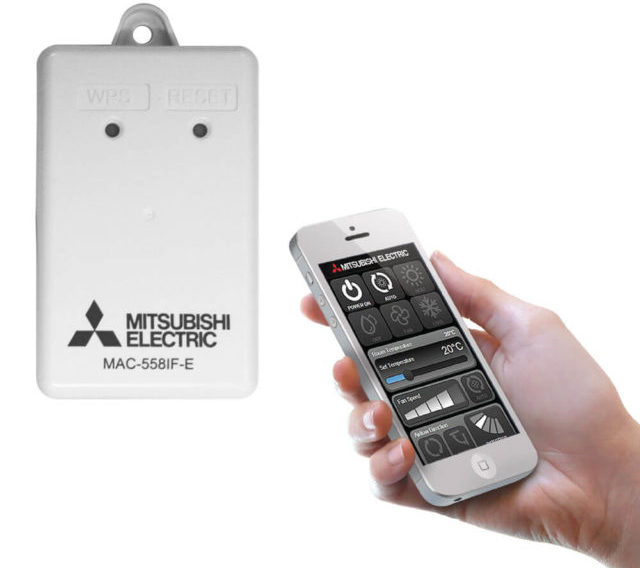 Thanks to the development of new technologies, homeowners have the opportunity to exercise control and remote control heating country house via GSM cellular network or via the Internet
Thanks to the development of new technologies, homeowners have the opportunity to exercise control and remote control heating country house via GSM cellular network or via the Internet The main task of the control module is data transmission, as well as its regulation using GSM communication.
This device provides the following capabilities when coordinating heating functions:
- remote adjustment of radiator temperature or adjustment of boiler operating parameters;
- remote reception and sending of messages about the state of heat supply;
- messages about leaks in pipes (this function is available in expensive modifications);
- inclusion of auxiliary gadgets to enhance security, etc.
Such capabilities make it possible to control the heating function even from a distance of hundreds of kiloliters. In fact, by installing a GSM controller, the home owner receives a universal remote control for heat supply coordination.
Attention! To perform the presented functions, not only the controller is used. Correct operation of the unit is possible by adapting other equipment to a module that supports the global standard for digital cellular communications, as well as the availability of mobile network coverage.
Heating control system elements
The heating control unit is a set of elements combined into a single circuit. Their selection becomes key to ensuring the efficiency of the system. Items may have different characteristics. The main indicator of their effectiveness is the possibility of forming multilateral communication between the control unit, the owner and the heating elements.
 The basis of the system is a special electronic unit that has 1 or several slots (sockets) for installing conventional SIM cards for cellular communications
The basis of the system is a special electronic unit that has 1 or several slots (sockets) for installing conventional SIM cards for cellular communications Almost any GSM complex operates with the participation of the same elements, which may differ only in the basic configuration and controller resources.
Typical configuration of elements of the GSM heating coordination system:
- connecting wires;
- several temperature meters;
- GSM controller;
- leak detector;
- electronic key scanner;
- access control mechanism;
- GSM signal reception and broadcast antenna;
- accumulator battery;
- an ethernet adapter that provides interaction with other elements;
- blocks intended for connection to the boiler;
Control unit "TR-102"
For example, consider one of the most popular modifications of GSM systems today. Its main purpose is to maintain temperature in 4 zones. It occurs in a cyclic mode thanks to the thermostat. This displays the current administration area.
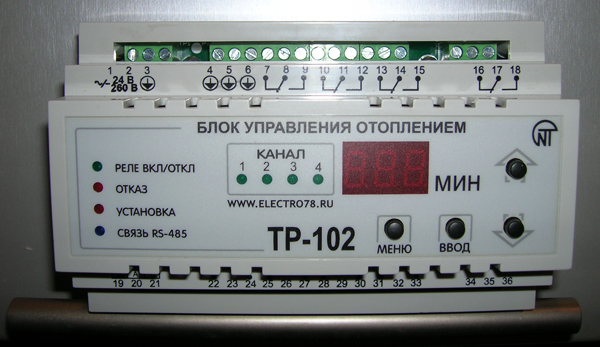 It will not be possible to remotely control the simplest energy-independent heat generators that do not have electronic systems.
It will not be possible to remotely control the simplest energy-independent heat generators that do not have electronic systems. The TR-102 unit performs the following functions:
- blocking control of unnecessary areas;
- cyclical support temperature regime in 4 thermal zones;
- displaying information on an integrated indicator with LEDs;
- setting up the unit using a computer or keys on the front panel of the unit;
- transferring information about regulated zones to a computer via an open communication protocol;
- saving configurations after power failures or unauthorized logins;
The presented heating control unit does not depend on power outages. An additional advantage of this system is the bimetallic sensor for thermoregulation, which is user programmable.
Conditions for using the TR-102 block:
- storage is carried out at temperatures from -45 to +70 °C;
- operation is possible at temperatures from -35 to +55 °C;
In this case, the standard atmospheric pressure should be from 84 to 106.7 kPa, and the air humidity should be 30–80%.
Heating control methods
Remote throttling may differ in the method of data transfer. The key here may be the standard functionality of the transmitting panel, as well as the capabilities of the owner’s phone. Receiving information via SMS is the simplest thing the device should do. There are modifications of control units that have an integrated module for messages sent to control and configure functions. Such messages have a specific format. This method of coordinating boiler functions is considered the most common.
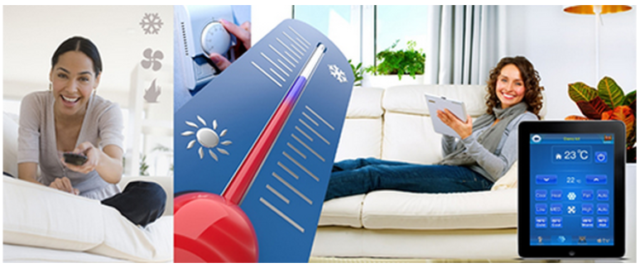 In normal mode, the automated heating system control unit acts as a remote control with a thermostat and monitors the maintenance of the set temperature in the rooms
In normal mode, the automated heating system control unit acts as a remote control with a thermostat and monitors the maintenance of the set temperature in the rooms Important! Effective remote administration of heat supply can be carried out by knowing the level of error in the indicators. Please note that the information received in the message may differ from the actual information.
Errors in system performance:
- electronic modifications of temperature meters by ±0.5° C;
- shut-off and control valves – from 0.2 ° C to 0.5 ° C.
Heating control devices
Programmers and thermostats
The key parts of the heating control system are thermostats and programmers. They are electronic devices, in some modifications equipped with a control panel, which helps control the operation of the boiler. In addition, such a device allows you to synchronously change the indicators in two connected components.
In addition, an additional function of the programmers is adjustment via SMS with cell phone or commands transmitted over the Internet.
You can select a suitable modification of this device based on a set of basic characteristics, which may include:
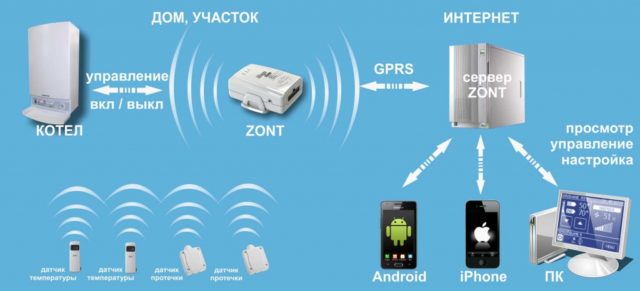 Control via the Internet occurs in the same way, only through a different communication channel between the homeowner and the electronic unit in the house
Control via the Internet occurs in the same way, only through a different communication channel between the homeowner and the electronic unit in the house - remote communication between components using radio transmitters;
- operation of radiators (depending on the settings) can be in comfortable, normal or economical mode;
- the number of connected circuits can be increased by connecting additional modules;
- heating control via mobile phone;
- data transfer via SMS, etc.
These functional features make the presented elements quite convenient and in demand.
Zone devices
Such heat supply control elements are installed directly on radiators and boilers. In this case, adjustment by the system is carried out via Internet connection. These devices are presented electronic thermostats. They are capable of changing the water temperature in each individual battery or the system as a whole. The differences between these thermostats are ease of installation and affordable price. At the same time, the complexity of setting up the system is reduced, especially since they do not require a separate control cabinet. Zone devices allow the use of several thermostats that are connected to one control unit.
Heating remote control modules
The function of remote control of the heating network can be provided by special modules included in the package with shut-off and control valves and programmers.
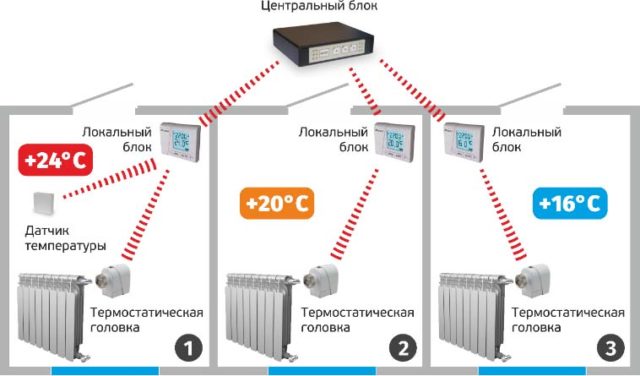 Quantity additional functions devices is limited by the number of connected sensors and executive relays of the electronic heating control unit itself
Quantity additional functions devices is limited by the number of connected sensors and executive relays of the electronic heating control unit itself Internet control
Control using the Internet block is as convenient as SMS control. It features the following features:
- installation of specific software systems into a smartphone, laptop or other gadget;
- simple interface that can be easily combined with Android or Windows OS;
- unlike SMS blocks, restrictions on the number of connected users have been removed;
- Parameters are adjusted where there is access to the Internet (you do not need to use roaming for this).
When traveling abroad, experts advise not to use roaming functions to regulate heat supply via the GSM system, as this can be fraught with large financial costs. In this case the right decision will entrust control heating system friends you trust.
Control over work heating radiators can be produced using devices local significance, represented by mechanical temperature controllers. They can't connect to electronic elements management. Their only advantage is their low cost.
GSM heating control scheme "smart home"
Usually you can install the system yourself. This requires checking the condition and analyzing the capabilities of existing equipment. It is also important to correctly select the missing components. Typically, a set of control devices is built from a single block, which is the connecting link between all components of the heat supply.
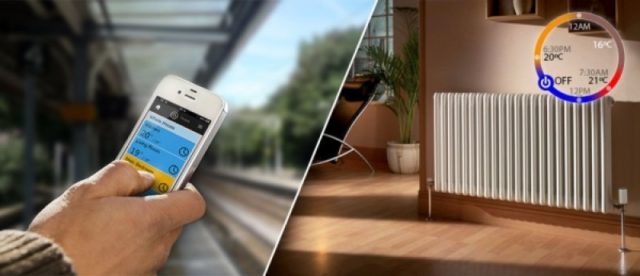 Control systems based on coolant temperature control operate regardless of current conditions
Control systems based on coolant temperature control operate regardless of current conditions It must be installed subject to the following conditions:
- The control unit should be located at a distance of no more than 300 meters from the user. To increase the distance, radio-controlled modifications are purchased, coordination is connected via the Internet or cell phone.
- The use of a controller based on heat supply control boards ensures the installation of additional functions.
- A careful selection of the location in the house for installation of the control unit is carried out.
Air conditioning control
In addition to heat supply control, GSM devices allow you to remote control air conditioning system. This is done using IR or Wi-Fi modules (requires connection to a phone or personal computer), as well as GSM controllers.
Internet control
In summer, air conditioners or systems consisting of several units are often used as cooling tools. So, in ordinary apartments you can lower the temperature to short time by using the turbo function. But in buildings where, for example, servers are located, there must be round-the-clock air cooling. The uninterrupted operation of powerful equipment provokes the release of heat. In such a situation, constant monitoring of microclimatic indicators in the room allocated for this equipment is required. Such processes cannot be carried out manually. For this purpose there is remote control. It is produced using devices remote control indoor indicators.
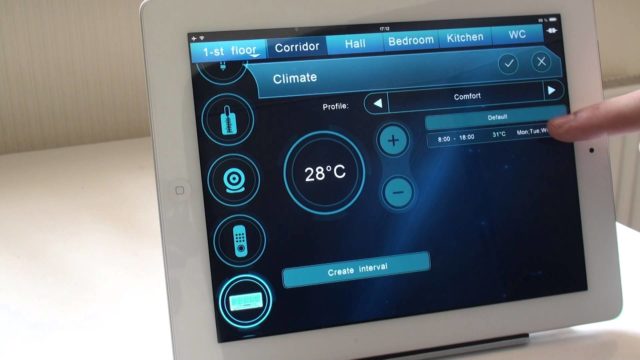 Weather-dependent regulation is considered the most progressive and effective, since it allows you to quickly respond to changing environmental conditions
Weather-dependent regulation is considered the most progressive and effective, since it allows you to quickly respond to changing environmental conditions In the case when an Internet network is present at the facility, the unit for remote control of the functions of the air conditioning complex can be launched using gadgets running on the Android or iOS OS. Such devices are climate modules designed to interact with modern air conditioners. They provide the ability to remotely regulate the operating mode. To do this, a special program for GSM communication is installed in the gadget. IN general scheme thermoregulation switches on a laptop, telephone or personal computer and an adapter connected to the air conditioner. To transmit information as additional component For remote control of the air conditioning system, Wi-Fi or infrared protocol can be used.
SMS control
It is most convenient to remotely coordinate the parameters of home air conditioners using messages. It is not only convenient, but also profitable. Used appliances can be turned off remotely to save energy. Such technologies are used in devices included in the Smart Home. GSM controllers Suitable for rooms where there is no Internet network. In this case, thermal sensors are used for correct operation. Operating modes are regulated using software, which is installed both in control units and in communication devices. Thus, you can change the power of the compressor, the speed of rotation of the fan motor, etc.
Computer control
For industrial systems Computer control of VRF air conditioners via a network is best suited. In this case, remote communication protocols are used.
When connecting a remote control module, the following problems can be solved:
- excessive energy consumption;
- 24-hour climate control;
- reduction of equipment service life;
- consumption of human resources, etc.
Besides, positive thing The application of GSM coordination of air conditioning systems is to provide comfortable conditions for workers and visitors of offices, entertainment centers, etc.
Having installed heating "Smart home", you can provide yourself comfortable conditions residence with automatic detection of temperature conditions in each room and non-residential premises. The engineers of ElektroReal LLC are ready to provide their clients with a full range of services for organizing a heating system in the house, starting with the arrangement of the boiler room and heated floors, and ending with the management of batteries. Integrated into the system "Smart home" heating, thanks to monitoring the operation of heating equipment, you will be able to prevent the occurrence of various critical and emergency situations, as well as save up to 40% of your bill costs.
Possibilities of the heating system in the “Smart Home”
By ordering from us heating control in a Smart Home, you will thereby receive many advantages and opportunities:
- Individual thermoregulation in each room. Depending on the purpose of the room, the appropriate temperature threshold will be set, thanks to which it will be ensured maximum comfort in the kitchen, bedroom, nursery, office, pantry or boiler room.
- Control of room temperature at a certain time of day/season of the year. Wherein heating batteries in a “Smart Home” will depend on the outside temperature.
- Monitor and adjust the temperature in rooms and other areas of your home thanks to built-in temperature sensors. You can control the operation of heating equipment manually or by installing automatic scenarios.
- Safety of the heating system and timely response to emergency situations. In addition, you have the opportunity remote heating control in a “Smart Home”, which means that in cases of failure of modules, violation of the integrity of the electrical heating cable or pipes in your home, they will automatically be de-energized or turned off, and you will immediately receive a notification about an emergency.
- Saving on electricity. So, for example, once setting in "Smart home" heating controlled via the Internet, you will be able to: save on heating bills every month and thereby soon compensate cash, which you will spend on purchasing special equipment.
Integration of the heating system into the Smart Home
By installing a heating system in a Smart Home, you can easily control the individual operating mode of each heating device, and thereby save a lot on energy consumption. Having configured the control in "Smart home" heating via SMS, you will have the opportunity to remotely monitor and regulate work heating devices in your home. If, for example, you are at work, but upon your return you plan to visit the home sauna, you can warm it up by dialing a simple combination from your smartphone. In addition, you can set the appropriate system parameters for the period you are away from home and then the heating system will operate in economical mode.
